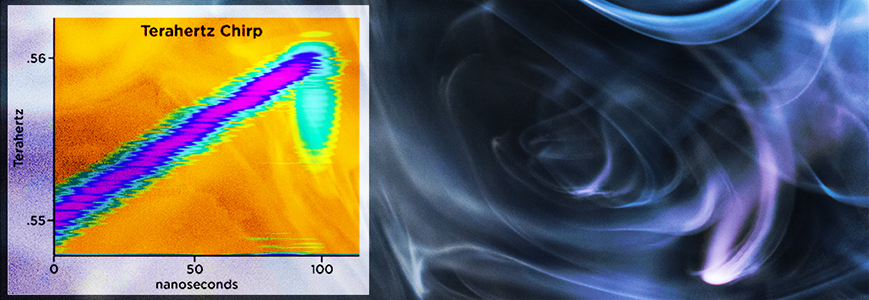NIST Detector "Chirps" to Sense Gases

It's a bird, it's a plane, no - it's a gas!
Trace gas detection, the ability to detect a scant quantity of a particular molecule—a whiff of formaldehyde or a hint of acetone—in a vast sea of others, underlies many important applications, from medical tests to air pollution detectors to bomb sniffers. However, many sensors are only able to spot a specific type of gas, and some only after a long time spent analyzing a sample.
To address these problems, NIST scientists have developed a sensor that detects a wide range of gases, while performing hundreds of times faster and more sensitively than other similar technologies.
The new sensor uses radiation at "terahertz" frequencies—between infrared and microwaves. Terahertz waves can make gas molecules rotate at rates unique to each type of gas, which implies the waves hold great promise for identifying gases and measuring how much gas is present.
Previously, detecting different gases this way meant exposing molecules to a vast range of terahertz frequencies—slowly, one after another. The NIST innovation is a sensor that “chirps,” or sends a quick series of waves that run the range from low frequency to high, similar to the chirp of a bird call. This makes it possible to look at nearly all possible gas molecules instantly using terahertz frequencies, and may make such detectors portable, economical and fast enough to be used everywhere.
Contacts
-
PML webmaster

